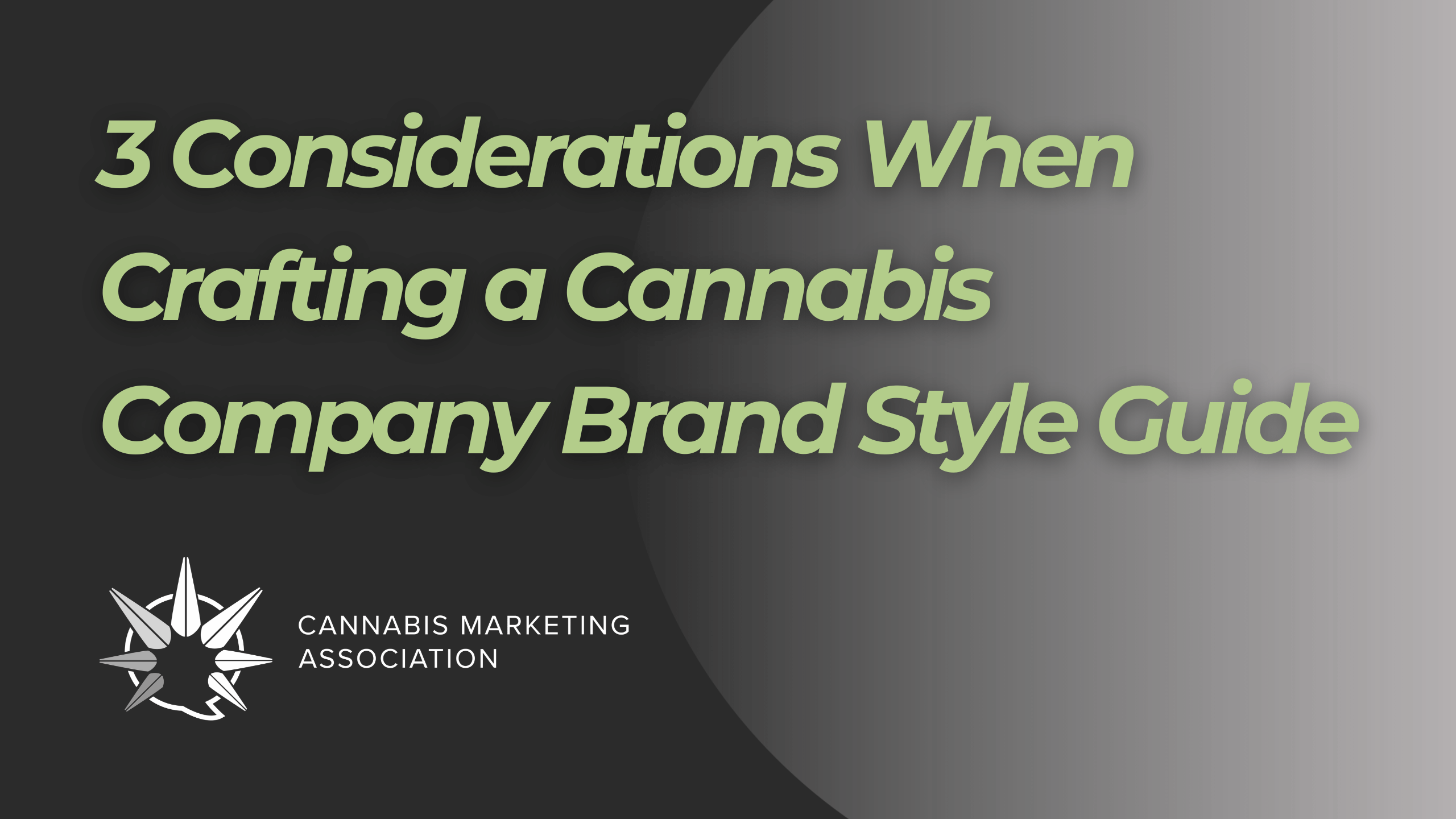By Johanna Bloomquist, Staff Writer, NisonCo
When interacting with a brand for the first time, consumers immediately notice aesthetic qualities and the company’s language use. As a cannabis writer, I can attest that subtle language choices inform a brand’s overall image and ethos.
We all have an obligation as cannabis industry professionals — and language users — to choose our words carefully to help legitimize the cannabis space and the brands we represent in it. Here are three main points to remember when writing cannabis-centric content or refining a cannabrand’s style guide.
The Role of Slang in the Cannabis Industry
First, we must acknowledge that commonplace informal language usage in the cannabis industry has played a vital role in bringing the sector to where it is today. The cannabis industry has been around for far longer than it has been regulated and legally recognized, and slang terms were necessary to protect operators and enthusiasts.
However, even the words we use to describe the cannabis market carry heavy connotations; for example, phrases like “illegal cannabis” or “illicit market” criminalize cannabis producers and consumers, while phrases like “unregulated cannabis” and “legacy market” recognize the longevity of the industry and the socioeconomic complexity of its history.
Slang also plays a vital role in community building. Well-placed cannabis slang terms can help your company draw on the cannabis community’s shared experiences, but choosing proper, staid cannabis terms in professional settings can generally help to legitimize the industry.
1. Refine Your Brand Identity and How You Want to Portray Cannabis
Though your company will need to spell out what it is you’re selling to whom, your choices of cannabis terms will greatly inform brand identity and how consumers see your products.
Match Your Cannabrand’s Terminology to Your Products and Services
Some delineations in cannabis terminology are easy to parse, such as the legal difference between “hemp” and “cannabis” or the state-issued requirements for “medical cannabis” providers. However, some language choices will rely more on who you are marketing to and the brand image you are trying to cultivate.
Different Cannabis Consumer Demographics Require Specific Targeting
For example, a cannabis company that sells vaporizers will choose drastically different words based on target demographics. If trying to sell to younger, trendier consumers, a vaporizer company will find success with casual terms like “cart” and “vape.” If trying to capture a mature demographic more focused on wellness, performance, and aesthetics, “vaporizer” is a better choice. Don’t be afraid to get creative with word choice, too — you can capture extremely specific groups of customers by using even more descriptive, unconventional keywords.
Likewise, though they mean the same thing, the terms “adult use” and “recreational” build your brand image. “Adult use” is the industry-preferred term, as it legitimizes cannabis and draws connections to other regulated and widely accepted substances such as alcohol and tobacco. Companies promoting cannabis as a wellness product or catering to older customers might find the term “adult use” can help set them apart. “Recreational” is the more commonly used phrase, but many believe the term portrays cannabis in a less professional light. However, it has its uses; dispensaries or distributors who sell fun, exciting cannabis products to more casual audiences oft find the term “recreational” helps them reach clients more easily.
2. Balance SEO Value with Responsible Language Use
Ideally, all cannabis companies could exclusively use industry-preferred, destigmatized language. However, consumers don’t use these words to talk about and search for cannabis products. As a basic example, “cannabis” is the industry-preferred term, but consumers most often search for “pot” and “weed.”
Tailor Your Company’s Cannabis Language to Appeal to Your Audience
Ultimately, companies must appeal to consumers, so informal, sometimes stigmatized cannabis terms are necessary. Figure out what words your customers use the most, and feature those words and phrases in your website’s titles, headers, and meta tags to maximize web traffic and get your products in front of customers.
Include Industry-Preferred Cannabis Terms and Educate Consumers
There’s more to websites than SEO-heavy headers and backend data, though. Consider balancing informal terms with professional structures and more technical, industry-preferred terms in your website’s body text on pages and blogs. In this way, you can combine searchability with B2B sales priorities and consumer education.
3. Know the History and Connotations of the Cannabis Words You Choose
Many of the most common cannabis terms stem from stigma. It’s essential to know where these words come from, even if you still use them for SEO and marketing purposes.
Cannabis Terms With Roots in Prohibition
One of the most prominent — and controversial — cannabis terms is “marijuana,” as it’s likely that the widespread use of this word arose from xenophobia and political lobbying. “Marijuana” (or “marihuana”) appears in most laws about the plant, and many feel that lawmakers chose this word to connect cannabis with immigrants, simultaneously demonizing both. Though overall use of the word “marijuana” is declining, it is still one of the more commonly used terms for cannabis, especially in the medical marijuana market (the human brain does love alliteration, after all).
Find Brand Success With Responsible Cannabis Terminology Use
As cannabis communications professionals, we have a responsibility to think critically about the words we use and why we use them. When creating a style guide, it’s imperative to put it into writing and distribute it to every employee who produces written work for your company. Once you’ve settled on your choices and disseminated your brand-new style guide, you can implement these tips immediately by editing your company’s professional profile and website before releasing updated marketing materials. Using stylistically consistent, genuine, and accurate cannabis terminology will, ultimately, help your company achieve greater success.
Unsure where to start? The Cannabis Marketing Association offers an excellent free Cannabis Brand Book Workbook resource here.
 Author
Author
About Johanna Bloomquist:
Johanna joined the NisonCo team in 2022. She graduated summa cum laude from the University of North Carolina in 2019, earning a BA in English with Honors. Johanna is passionate about lifelong learning and the power of language in every form that it takes. Using years of researching, writing, and editing experience, she has worked as a content writer, marketing team member, salesperson, and business development representative within the cannabis industry. You can find her reading for fun, making something from scratch, or getting outside when she’s not diving into the latest niche topic for work.
Connect with Johanna on LinkedIn here.
About NisonCo: NisonCo is a media, internet and content marketing agency deeply rooted in advocacy. NisonCo is America’s oldest cannabis PR firm and was established in 2013 with an emphasis on harm reduction and cannabis legislation. As leaders in public relations for the emerging cannabis, CBD, and hemp space, NisonCo’s team is passionate about creating and maintaining a positive image for the industry. Access NisonCo’s free, resource-rich blog here and connect with them here.
Discover more cannabis marketing content and visit CMA’s blog.
For more information on becoming a member of Cannabis Marketing Association, visit our membership page.


